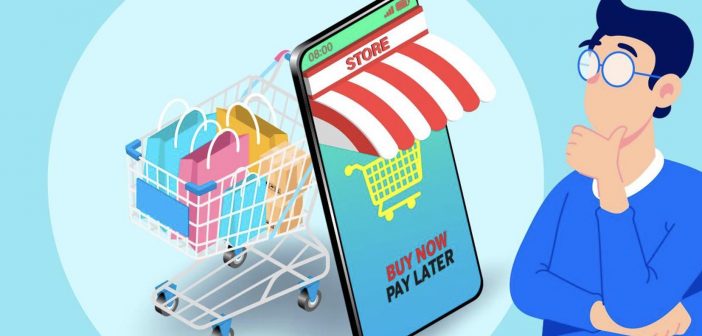Buy now, pay later (BNPL) looks great on the face of it! You can buy whatever you want, split the cost or pay the bill in a month without any interest charge or credit check.
In an online eCommerce world where we can purchase anything with a click of a button, it seems like an amazing tool that means people won’t need to wait for their next payday to buy a new pair of shoes or order the latest gaming console.
The dangers, though, are very real – and it would be foolish to assume that a BNPL lender is in it for anything other than profit.
What Is the Issue With BNPL?
BNPL can be advantageous, with the big caveat that it’s only a resource worth using if you have absolute certainty that you grasp the terms and will be able to repay on time.
Finance experts feel that the concept constitutes false advertising, and BNPL is really a short-term instalment loan, with considerably different conditions between providers.
While you’ll probably see BNPL as an interest-free payment option on your checkout, that isn’t quite true.
The Guardian reported last year that British shoppers had accumulated a staggering £4.1 billion in BNPL debt, with 7.7 million people owing an average of £538.
With very little regulation (although we’ll look at this shortly), the problem is that BNPL is often marketed to young adults buying trending products such as clothing without any knowledge of the potential charges and interest.
BNPL is closely linked to overspending and indeed encouraging irresponsible borrowing by enticing customers who do not have the funds with promises of staggered repayments.
If consumers don’t need to save up to make a purchase, they will inevitably spend more than they otherwise would – and can quickly rack up multiple BNPL agreements with different lenders without any realistic way to pay it back.
How Do BNPL Companies Make Money?
The profits originate from late payment charges – a business model that relies on selling a service to people who aren’t likely to repay their debt on time.
In itself, this is a massive red flag.
Credit lenders outside of BNPL operate within a tightly regulated market. They cannot lend to somebody they suspect is unable to meet their financial obligations – this is the reason for credit checks and affordability assessments.
It also begs the question; are BNPL lenders deliberately targeting people they think won’t be able to pay and doing so to improve their profit margins?
Some BNPL providers earn money through merchant fees. However, that doesn’t usually replace the late payment charges and is often a second revenue stream.
Many eCommerce sellers pass those costs directly to their customers, so while it looks like a great deal, the product price has been increased accordingly.
What Are BNPL Late Payment Charges?
Charges depend on the BNPL provider but can be incurred if you miss an instalment, forget a repayment is due, or don’t have sufficient funds in your account.
Examples of late payments include:
- Clearpay: a £6 late fee, which can be charged multiple times on orders worth over £24, up to 25% of the value or £36 total.
- Laybuy: also charges a £6 late fee, which they can levy twice for every missed instalment, capped at £24 per purchase.
Individually, those rates aren’t enormous – but a consumer with several orders, all funded through BNPL, could quickly end up paying more in charges than the original cost of the order.
Credit Lender Warnings About BNPL
The problematic issues around BNPL aren’t anything new, but credit lenders are highlighting the dangers and warning consumers about the potential damage to their creditworthiness.
Established brands in credit based fintech sectors, notably the online loan company Wonga South Africa have championed the need for better financial literacy education to ensure borrowers understand what they’re getting into and the cost if they can’t keep up the repayments.
The call is that external regulation from financial bodies is required to help protect consumers. This parallels the origin of the online quick loan industry well over a decade ago when the first companies to offer these loans were loosely unregulated and resulted in many customers becoming trapped in dangerous debt spirals because they gained access to credit they should never have qualified for. Regulations actually protect both customer and lender by making robust feasibility and risk analysis checks mandatory in the application process for all lenders.
For now, the regulatory environment is in limbo as rule makers decide how to address this new area of consumer financial risk – but the best course of action seems to be to save for bigger purchases rather than take the gamble.
Is BNPL Lending Regulated?
Credit Karma reported last year that 38% of BNPL users had fallen behind with a repayment. Of those, 72% say their credit rating fell as a result.
In the UK, the Financial Conduct Authority (FCA) has begun to step in, announcing recently that it had instructed the four largest BNPL companies to change their contracts due to terms it found to be unfair, unclear and a risk of consumer harm.
Note, though, that BNPL is not regulated – the FCA could only get involved through rules embedded in the Consumer Rights Act (CRA).
Nor is it controlled by any other regulator in other countries; the Consumer Financial Protection Bureau in the US says it is scrutinising BNPL solutions, but there haven’t yet been any changes.
Likewise, the UK is using CRA powers to enforce contractual amendments, but there is no certainty when it will bring BNPL within the scope of the FCA.




